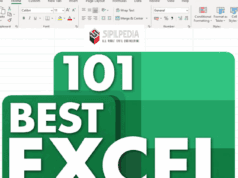Duration: 1h 50m | .MP4 1280×720, 30 fps(r) | AAC, 44100 Hz, 2ch | 886 MB Genre: eLearning | Language: English
How to quantify relationships within data using Excel
What you’ll learn
Use Excel to quantify relationships within data
Requirements
Basic familiarity with Excel
Description
Regression is an important statistical tool. Using regression, we can detect and quantify relationships within a data set. For example, you have a data set of truck distances driven and stops made. Using this information, we can construct an equation which allows prediction of duration given distance number of stops. This would be of great use to anyone having to give out quotations.
I show you how to check whether your regression actually works and how accurate it is.
Indicator or ‘dummy’ variables are an important source of information, and I show you how to convert textual data into dummy variables for inclusion in the regression analysis. We know how long repair jobs take and months since last service. Does including information about whether the job was electrical or mechanical make predicted repair time any more accurate?
Sales go up at certain seasons: being able to measure those increases and predict them is highly useful.
We also cover elasticity, a topic often missed out in regression courses. Using elasticity, we can predict the effect on sales volume in precent of a percent change in selling price.
I provide detailed explanations and provide the datasets so that you can follow along.
The pace of the course is measured and step by step, each section building on the last. The datasets I use in the examples are included so that you can run your own regressions and compare results.
Who this course is for:
Beginning statisticians
DOWNLOAD







